
18 minute read
Opportunity for Amistad
Social and racial injustice remain a red-hot topic as the pandemic fades. Can Discovering Amistad seize this tailor-made moment and build a sustainable future?
The trials and tribulations of the Amistad replica have been well documented; currently the vessel sits idle at Mystic Seaport. We recently spoke to Robin Hogen of Discovering Amistad’s Board of Directors to see what was being done to capitalize on the present opportunity.
Advertisement
Marlinspike: It’s been six years since Discovering Amistad picked up the mantle from the previous organization entrusted with the schooner. In some ways, this seems like the best of times and the worst of times. On the one hand, social and racial injustice are in the forefront of our national dialogue right now. And yet the pandemic made it difficult for your organization to engage with the public on these issues that are central to your mission.
Robin Hogen: The way we position it, Mike, this is a story with a ship, not a ship with a story. We put the mission ahead of the boat. We use the boat as a vessel for teaching students and adults about the legacy of slavery of this country over the last 400 years.
So we start at 1839, but we fast forward to talking about what’s going on in your neighborhood, your community, your church, your university, your high school. And we have these courageous conversations, which are curated by our staff, in schools and increasingly in corporate boardrooms and community meetings, as more and more communities are awoken to the lasting legacy of repression that has affected people of color in this country.
You’re absolutely right — this is the worst of times, in that the way the ship’s configured, you’re always in close quarters. We couldn’t bring people on the boat safely this past year. This summer, she will be tied up at Mystic for at least the next couple of months. RJ and his team have got quite a bit of work to do on the boat. But we do use the boat on the wharf there, right next to the wharfmaster’s shack. There’s a lot of foot traffic. People ask about her all the time, and we have a placard outside the boat that says, “This is the Amistad” and lists what her tonnage is, her length and beam and so forth.
We use the ship as a teachable moment. We have educators on the boat every weekend, during the summer, when the Seaport is full of people who are very interested in this story. They saw the movie, or they read about it, or they thought they knew the story, or someone told them they should read the story. We engage a lot of people in conversations just having the boat sitting there.
I’m a sailor, and it kills me to go on that boat and not be able to throw the lines and go down the river. But that’s probably going to be the reality until late August.
Our plan this summer is to have RJ lead the restoration of the ship. It’s not in terrible shape; it was hauled last year, and the bottom’s in great shape. It’s really just a lot of varnishing, a lot of topside work — there’s 129 feet of mahogany from one end to the other. It’s a monster job to get it to where it should be.
We hope to take her to Hartford in late August, early September. Getting our COI, getting a crew, getting a temporary captain and bringing her to Hartford, probably without passengers. Taking her up the river and using her again as a platform in Hartford, to bring people together and talk about the history of racism in this country.
We are planning to do an experiment where we bring together kids from urban and suburban districts, in one room, to talk about racism and to have, frank conversations about this charged topic. Mixing kids from say, West Hartford and North Hartford — two very, very different places. Mixing kids who would never be, and have never been, in the same room; who almost speak different dialects, talking about this very important topic. And if a 15-year-old can’t talk about it today, what’s he going to do when he’s 30? We are going to be in the same mess we are in today.
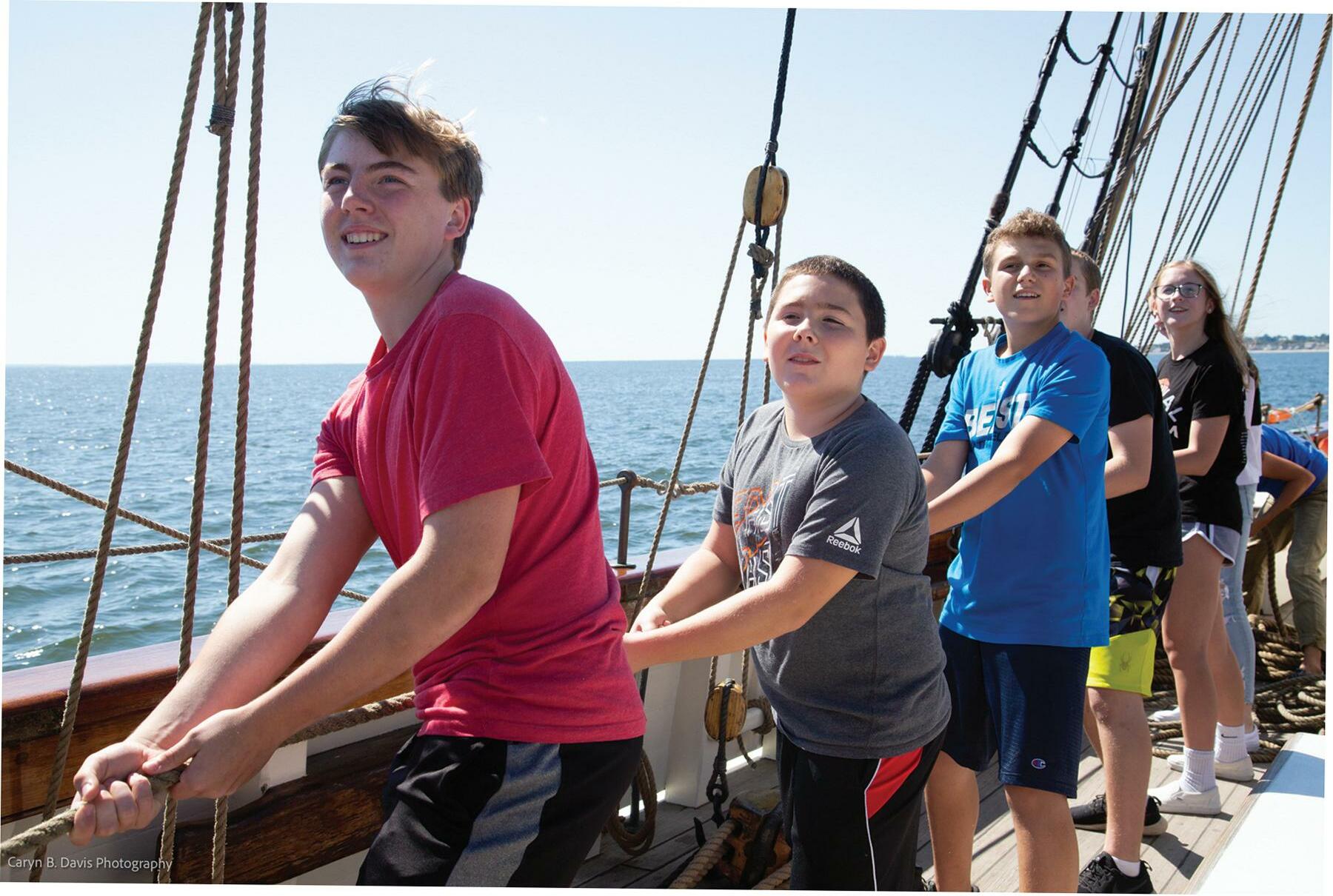
CARYN B. DAVIS PHOTOGRAPHY
MS: Tell me, how do you manage those conversations? All these kids know the names and the stories of Trayvon Martin, Breonna Taylor and George Floyd. In your programming, how can you connect the dots between the Amistad Uprising of 1839 and police murders in contemporary America?
Robin: I’m not an educator, and it’s probably best that one of our very skilled educators tell you that story. But my layman’s understanding is Amistad is a story about resilience. It’s about leadership. It’s about bravery and persistence, and all of those qualities are important today in everything we do. We really can teach a lot about how to live your life as a change agent in your community.
If you look back at the Mende people and what they did to survive and get back to their country… it’s an amazing story, one that is still inspiring today. If it’s good enough for Steven Spielberg, it’s a hell of a story, right? And, it creates a kind of a Switzerland because you’re talking about something that’s really a charged, emotional issue. It’s a lived experience.
If you go to Conard High School in West Hartford, and you’re a White kid, you don’t really know what privilege is, because it’s all around you. It’s like oxygen. Kids in North Hartford are just the opposite. Every day, they wake up and their parents say, “Be careful when you walk down the street, don’t keep your hood down. Don’t run. Don’t go for a jog, because they’ll assume you’ve stolen something or you’re running away from someone.”
I mean, they live in an entirely different world. And we have to have those conversations that we’ve swept under the rug for too long.
MS: There’s been much discussion the last two years over the lack of diversity in the tall ships industry. You don’t see many people of color at the Tall Ships America annual conference, or frankly on the decks of our vessels, as passengers or crew. And here we are, three White guys, having this conversation about the Amistad. Can this be changed? What can we do to change this?
Elegant and fast, AMISTAD is also complex for a schooner, and challenging to sail.
Robin: We should have an all-Black crew. Let’s be frank. I mean, it’d be great. We should have a Black captain. Our executive director is a woman of color. She’s just been hired, and she’s going to be terrific, but she’s been on the job for literally two weeks. RJ has got more seniority than she does.
What we have done is brought thousands of kids on the boat who’ve never been on a boat before. Who’ve never seen Long Island Sound, and they live in Bridgeport or they live in New London or Stamford! They literally didn’t know there was an ocean out there. It can be transformational.
We need to start tracking those kids as they get into to be teenagers and young adolescents and recruit them into some kind of a training program, so that they can become young mariners. You know the SoundWaters program in Stamford?
MS: Sure, that was Len Miller’s program.
Robin: Len started SoundWaters, and he’s now chairman of Discovering Amistad. He’s a glutton for punishment.
MS: And he’s the guy who knows how these programs are run.
Robin: Exactly, and he knows that you’ve got to planting seeds now, so that you can get a Black crew in three or five years that have the skills to sail a tall ship. The Amistad is not easy to sail. She is a very big, heavy boat.
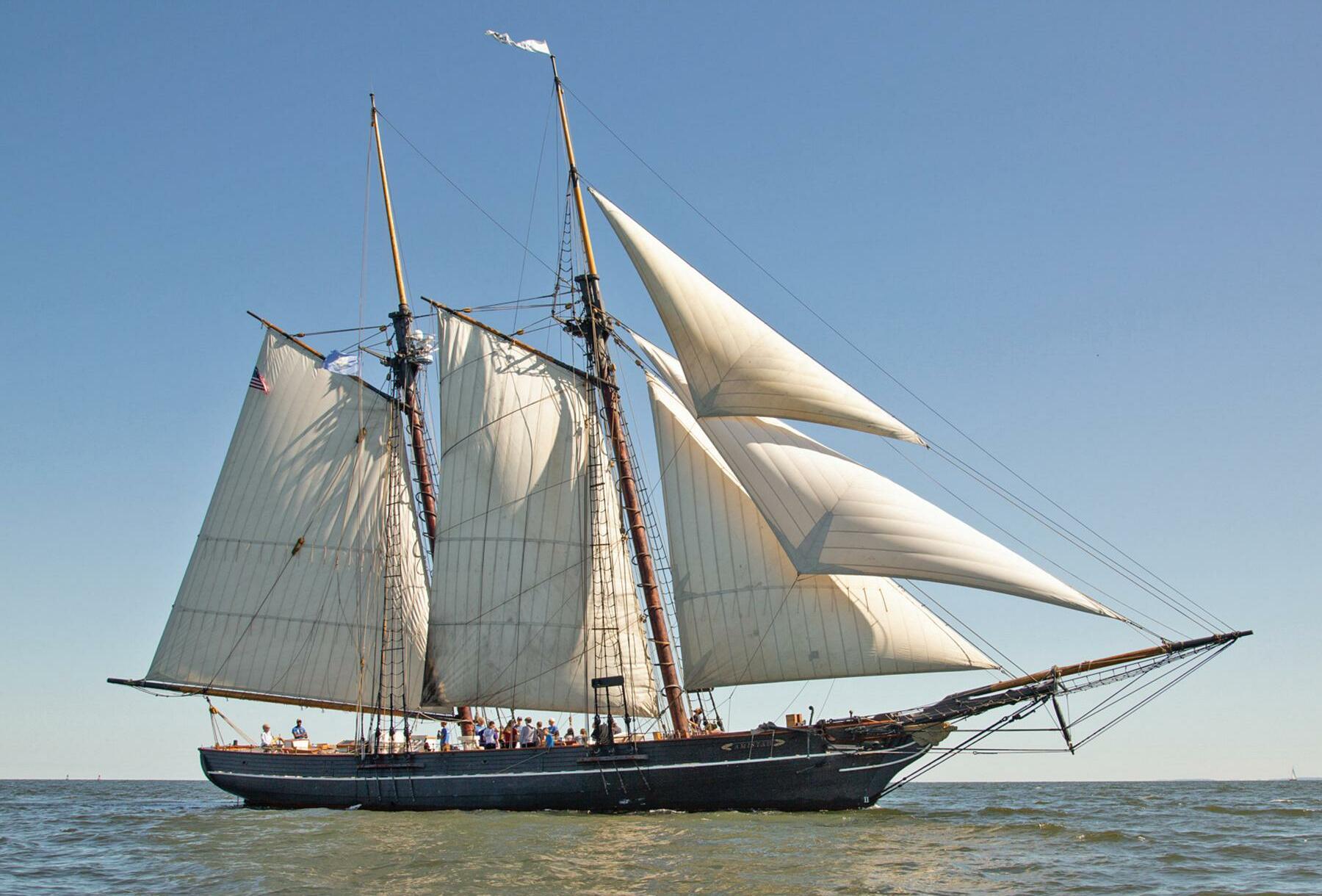
CARYN B. DAVIS PHOTOGRAPHY
MS: The Baltimore clipper-style topsail schooners are notoriously challenging to sail.
Robin: But we aspire to having a much more diverse crew. For a brief time, we had on our board the only woman of color in the country licensed to captain a tall ship. She had to step down because of other duties at her full-time job. And she lives in New Jersey. It just wasn’t a good match, but we’re on the hunt for more people like that.
MS: Robin, tell us a little bit about the transition between Amistad America and Discovering America. How is the mission and business plan of Discovering Amistad different from Amistad America?
Robin: I wasn’t involved at all in Amistad America. But my understanding was that they built a ship without a clear mission. They didn’t have education at their core. It appears that their vision was, “Let’s build this gorgeous replica of the Amistad and sail her around the world. The ship will be an Ambassador for Connecticut. We’ll go back to Sierra Leone. We’ll go to Cuba. We’ll go up to Detroit. We’ll take her up through the Great Lakes, visit the Heartland. And this will be a wonderful message for the people of Connecticut.”
Well, that sounds great. Problem is, it’s very expensive. There’s no revenue play. There’s no real education program. You’re not bringing kids on the ship and explaining and creating a curriculum around the ship, you’re just sailing her.
Again, that was a laudable goal, but I don’t think they had a strategic plan. And over time… it took about 14 years… there was a steady decline in the maintenance of the ship: in the programming, in the fundraising, in the management, everything went south. And when the boat was finally taken over by the state, it was in receivership. It was in very sad condition.
MS: This is me being ignorant, but I thought the boat was built for the Spielberg movie.
Robin: No, it actually was built after. The movie came out in 1997, I believe. And a bunch of leading Black Connecticut residents saw it and said, “Hey, this is our state! These are our people! This is a fabulous story! Let’s raise $3 million and build a replica of the Amistad. She’ll be the flagship of Connecticut. We’ll sail her to Africa, we’ll sail her to Cuba.”
It got a lot of people excited. There was a great deal of money raised by the state, by churches, by foundations all over the state and by wealthy individuals.
But frankly — and this is a very unfortunate part of the story — they ended up feeling burned. They felt they were deceived, and that there was mismanagement, which there clearly was. And there was a bad taste in everyone’s mouth who was involved with the original organization, when they went belly-up in 2014. But the Governor at the time, Dan Malloy, said, “This boat is not going to be cut up for junk on my watch.” Some people still feel that Amistad should be taken out in Long Island Sound and scuttled. It’s just a hole in the ocean that we’re going to keep pouring money into. Why do we need this? We’ve got deficits. We’ve got people that are lining up to get free food. And we’ve got this expensive boat into which we’re pouring hundreds of thousands of dollars a year, for maintenance and crew. So, there was a real conversation back in 2014 that Len Miller ended up leading. What do we do with the ship? Do we scuttle it? Do we sell it? Do we give it to Mystic? Or do we try to revive it with a new name, a new board, a new mission, and then really use her as an educational vessel? To make a long story short, that’s what happened.
But almost every meeting we attend, whether it’s with the Connecticut Humanities Council or with a foundation in New Haven or a wealthy individual in Greenwich, they say, “Wait — didn’t you people go out of business? Didn’t you walk away from a lot of bad debts?”
MS: Has that debt stuck to the boat?
Robin: No, the boat is free and clear. There’s no overhang. We have a new 501c3, a new name, a new board. But you don’t lose that unfortunate story, that legacy, quickly.
AMISTAD has struggled to recruit officers and crew of color
People have a long memory in this state.
So there are a number of donors, a number of foundations, who have not forgotten that they wrote big checks 20 years ago, and they feel that they were betrayed. And they’re all sitting back and saying, “Well, let’s see if you guys can pull this off.” You know: “Can you make this work? Can you afford to keep that ship going? Can you develop a program that has a revenue stream? Can you manage your affairs?” There’s a lot of wait-and-see out there.
MS: That’s quite a stigma to overcome when you have no operating revenue — when you’re entirely dependent on philanthropy and on government funding to operate.
Robin: The state of Connecticut, just to be clear, has been very generous. They are funding the program and giving us bonding for repairs. Without the state, that boat would be sitting at Mystic, probably, permanently. There would be no programming. There’d be no sailing. It would permanently berthed there.
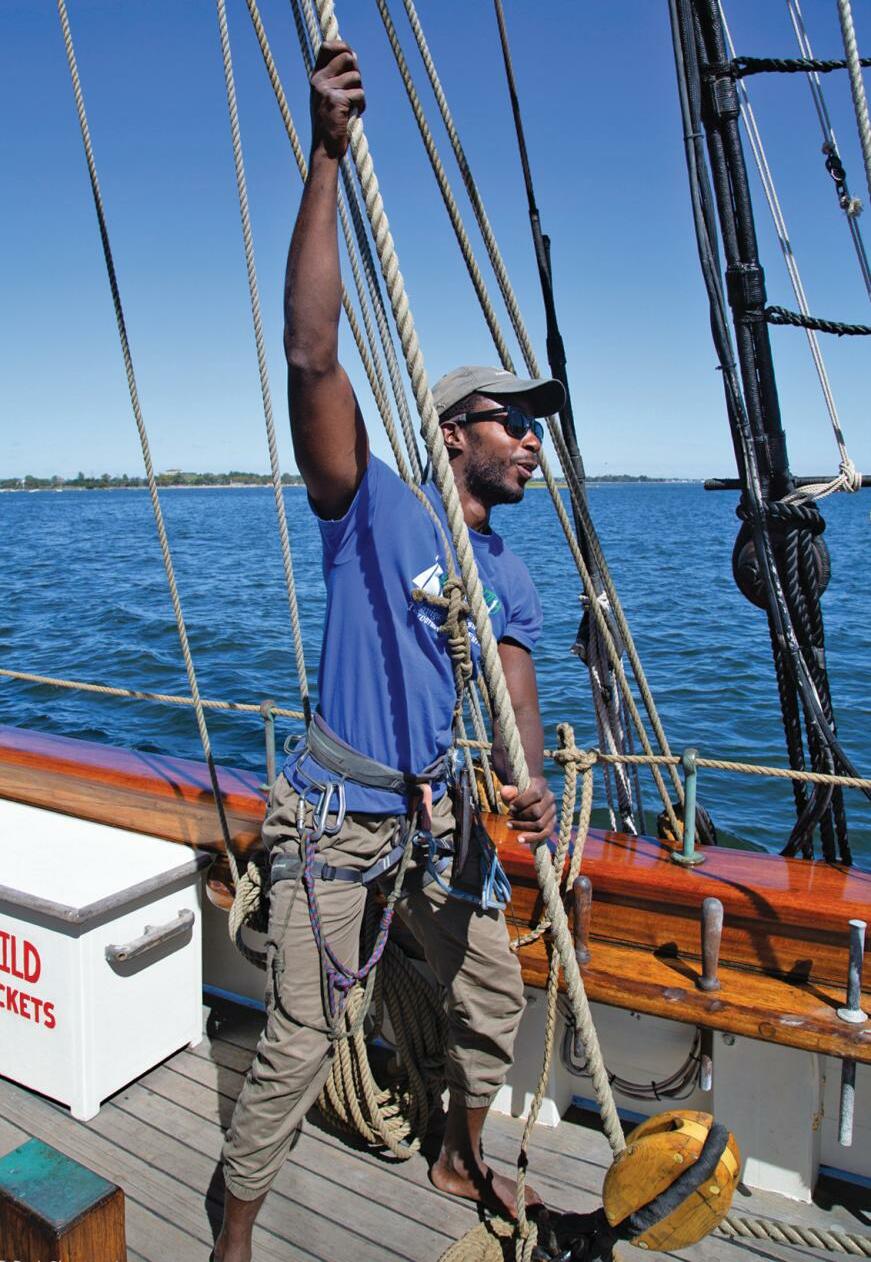
CARYN B. DAVIS PHOTOGRAPHY
MS: Do you see a future where the vessel might generate significant revenue through operations?
Robin: I do. I think that the untapped area is the corporate sector. I mean, that ship is made-toorder for a 20-person executive committee or board- CARYN B. DAVIS retreat or departmental meeting, to go out in the morning and sail a vessel like Amistad as a team — raise the sails, trim, learn about navigation, spend the day, and maybe the night, on Long Island Sound.
You could charge $10,000 for that experience. And we’ve never done that. I think there’s a huge potential revenue play there, again, if you build it around implicit-bias training. Imagine having an implicit-bias workshop in the middle of Long Island Sound, on the Amistad. “Where do I sign up? How many people can I bring?”
That’s a conversation that we have to have when we’re ready, when we can sail safely. I mean, the ship can only sleep 12-15 people It’s a big boat, but it doesn’t have a lot of overnight capacity. So day sails that are curated with educators on board, talking with people who are leaning into that conversation and know they have a problem in their company — we can be a solution, and we can charge for that.
MS: Now for those programs, obviously, you need a Certificate of Inspection. So what’s the status of the schooner, along those lines, right now?
RJ: We’re having this conversation about four hours too early. I’ve got a phone call with the primary inspector who’s been assigned to the vessel later today. Unfortunately, he went on vacation right after I started here, and I’ve been trying to get ahold of him ever since.
All of the [USCG issues] have been taken care of. There is some rot, in a bulkhead, that needs to be addressed. That hasn’t been documented by the Coast Guard, but they’re aware of it. We need to create a plan around that. I think with the conversation with this inspector today, there is a significant likelihood of building a good enough relationship that we may have a temporary status as a dockside exhibit. But once we take care of the bulkhead rot, which is probably a month’s worth of work for a couple guys, we should be able to transfer that COI into carrying passengers.
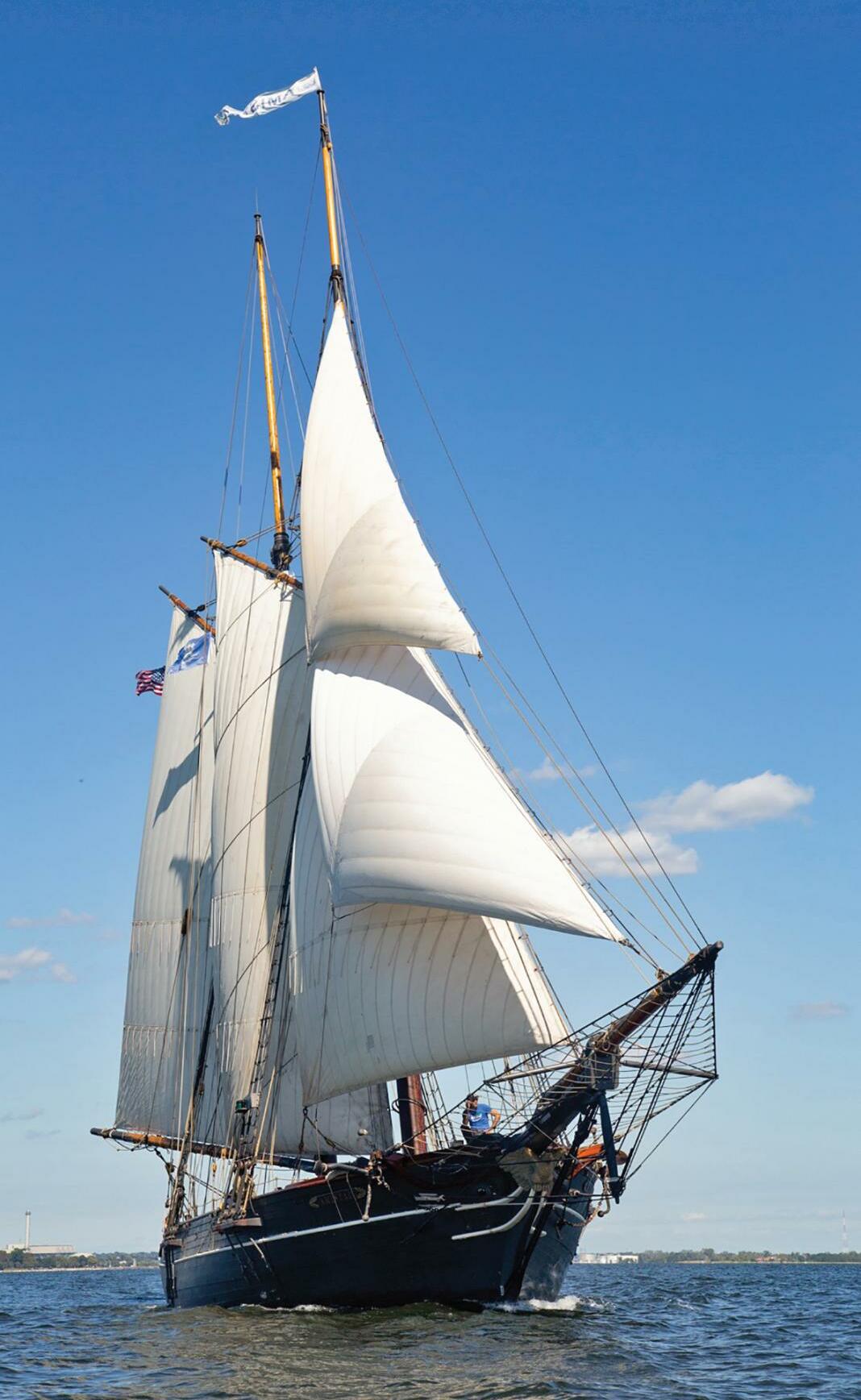
CARYN B. DAVIS PHOTOGRAPHY
Robin: The ship was sailing last summer. We called it ‘A Tour of Enlightenment’. We took her to Bridgeport and New Haven and Oyster Bay, on a three-week tour: skeletal crew, no passengers, all programming was done dockside, but it was very well received. It was right after the murder of George Floyd. We had a Black Lives Matter flag-raising and we hosted ceremonies on the stern of the boat in all those cities. It was a great opportunity to tell our story.
But again, because of the expense of maintaining crew
and programming without a revenue stream, we brought her back to Mystic in July, and she’s been there ever since. Still, it’s not like she hasn’t sailed for two years.
MS: Are there any plans to get the boat out of Long Island Sound and venture a little farther afield?
Robin: One of our long-range goals is to bring her to Washington and to do a program with the National Museum of African-American History and Culture. And to have our Connecticut delegation host a series of meetings on the ship when she’s tied up in Washington, D.C. We would also stop at Philadelphia on the way south and go through the canal into the Chesapeake.
That’s something that takes a lot of planning, and we’d need sponsors in both cities. But that’s certainly something we’ve talked about.
MS: You’ve got a large and impressive board of directors, but the majority of those folks are educators and consultants. Who are the sailors in your organization? You have Len Miller, who I’m sure is an invaluable asset. Who are the other sailors in your organization? Who’s going to get this boat from where it is to where you want it to be?
Robin: There aren’t a lot of sailors. The emphasis has been on education. This reflects Len Miller’s vision which is: this isn’t about sailing, this isn’t about a ship. It’s about a story. It’s about civil rights and justice. He really de-emphasizes the ship. He doesn’t want a bunch of old white guys sailing this beautiful boat around Long Island Sound. That’s the wrong message. So he comes back to this story with a ship, not a ship with a story.
Ours is a very diverse board. It’s about 40% people of color. And really no one else on that board owns a sailboat or is an amateur sailor. There are some people on the board who have never been on a boat. But they’re on the board because they’re educators with a passion for our mission.
We have a PhD from the University of Arizona — a long way from water! — but he’s an expert on the Middle Passage. He’s written a book about the children of Amistad. There’s a large community around the country of Amistad scholars. The Amistad story has spawned a lot of research and a lot of conversations. And that’s what it’s supposed to do.
But looping back to the ship. We were fortunate to find RJ this summer, kind of in our own backyard. We were scratching our heads saying, “How can we get this boat back to Bristol condition without bankrupting the organization? We can’t spend $60 an hour on skilled deckhands, varnishing and working on the rigging, and doing saltwater washdowns, and everything else that has to be done almost on a daily basis. We would just be bleeding the organization. Then RJ popped into our lives, thank God.
We’ve never had a Shipkeeper. We’ve had to rely on a fully-crewed boat with five people working in the spring — full-salary, benefits, all of that expense load. Now, we’re flipping to a volunteer model for maintenance where RJ will be heading up a volunteer corps of guys and gals who love tall ships and who want to work on them. We are looking for men and women who don’t need to get paid and just want to be outdoors, working on the boat, to bring that boat back to where she should be, and maintain her at that level.
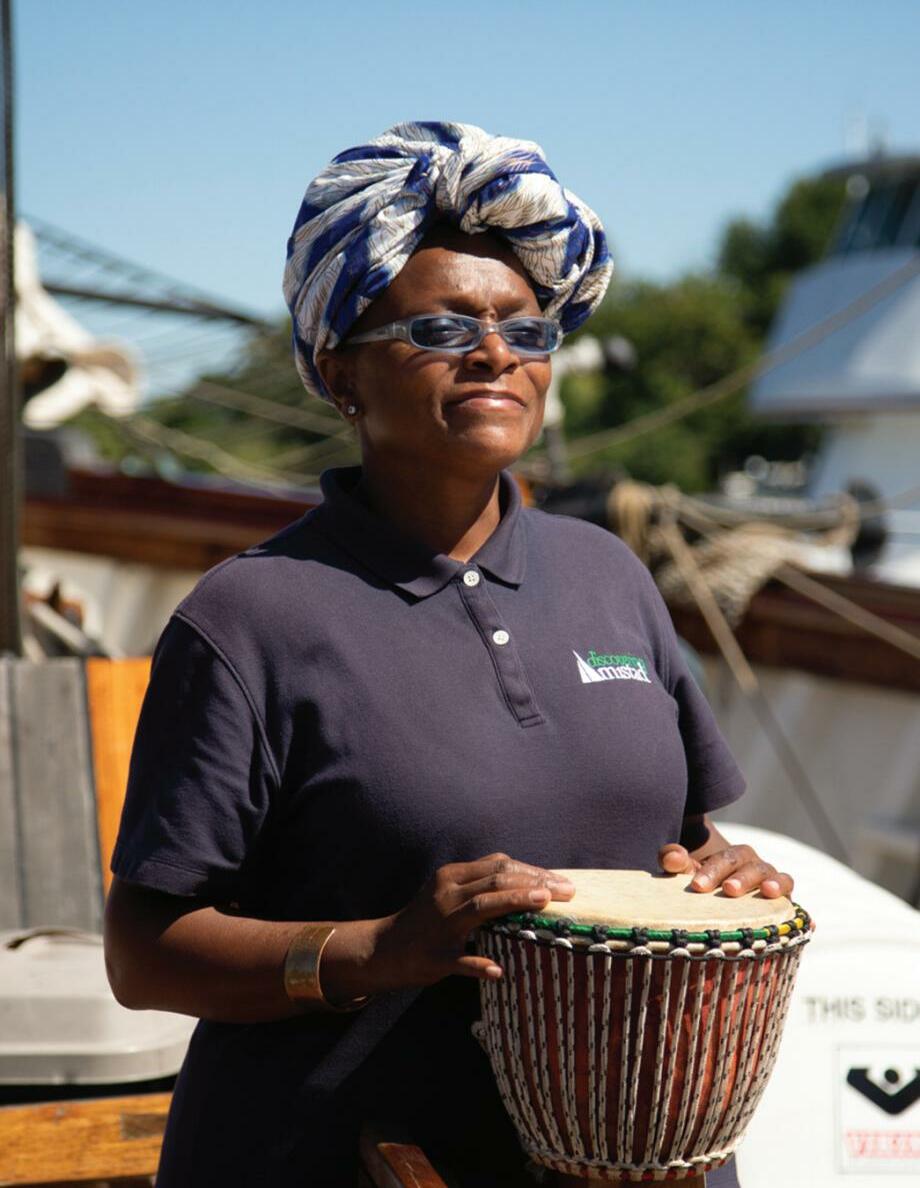
CARYN B. DAVIS PHOTOGRAPHY
MS: RJ, let’s finish up with that, then. What’s your work list look like this spring?
RJ: Well, I keep on falling back to the old cliche “How do you eat an elephant?” The answer is “One bite at a time.” The primary issue right now is making sure that there’s a plan for that bulkhead and getting the rig back in pristine condition. I’ll be working with Matthew Otto on that.
MS: When you say bulkhead — is the vessel subdivided?
RJ: Yes.
MS: So this is a subdivision bulkhead, a watertight bulkhead we’re talking about. Okay, sorry, you were talking about the rigging.
RJ: Yeah, we’ll be working with Matthew Otto. I’m going to be doing some training courses with him, so I can come up to speed and not always have to hire Matt for everything. I will be doing simple things like seizings and other stuff. And, as you know from the article [in Marlinspike #28] that you so graciously published for me, I know a little something about wooden blocks. So, the work list is an immense amount of varnishing, taking care of that bulkhead, getting the rigging back in order, and just generally organizing the vessel, so she is ready to sail by mid-summer. ❂



